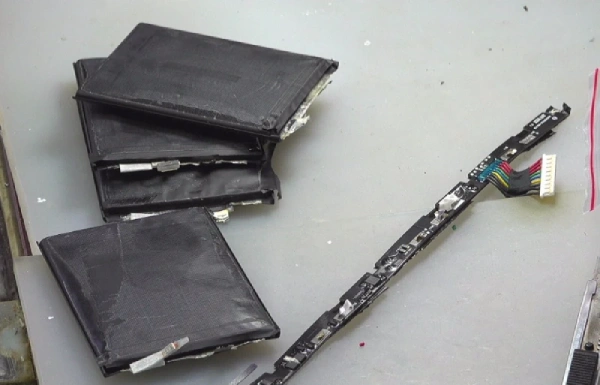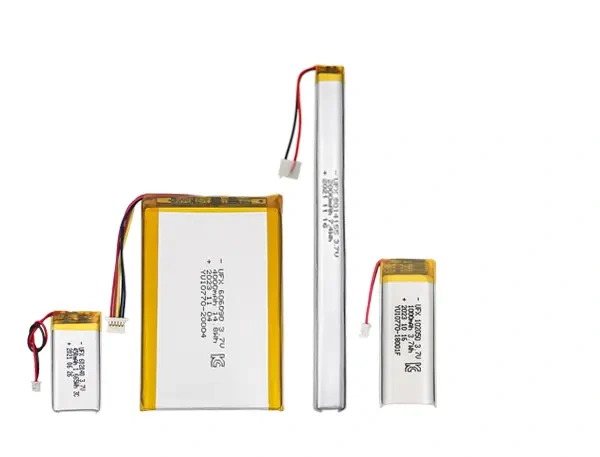When a digital device is used for a long time, its built-in lithium battery may swell. Why do lithium batteries expand? What are the solutions?
Part 1. Why do li-ion batteries swell?

1. Overcharging causes the lithium battery to swell
Overcharging will cause all the lithium ions in the positive electrode material to escape into the negative electrode material. This will cause the original full grid of the positive electrode to deform and collapse. In this process, more and more lithium ions are in the negative electrode. Excessive accumulation causes the lithium atoms to grow into stump crystals, causing the battery to bulge. This is also a main reason for the decline of lithium battery pack power.
2. Over-discharge causes the lithium battery to swell
The SEI film protects the negative electrode material of lithium-ion batteries, making the material structure less likely to collapse and increasing the cycle life of the electrode material. The SEI film will change slightly during the charge and discharge process. Mainly, some organic matter will undergo reversible changes.
After the battery is over-discharged, the SEI film is reversibly damaged, and the SEI that protects the negative electrode material is damaged, causing the negative electrode material to collapse. This results in the bulging phenomenon of lithium batteries. Suppose the charger used does not meet the requirements. In that case, it may cause the lithium battery to swell, cause a safety accident, or even explode.
3. Lithium battery manufacturing process issues
Suppose the electrode coating during the manufacturing of lithium battery packs is uneven and the production process is rough. In that case, it may also cause lithium battery bulges. Therefore, lithium batteries must be tested after they are manufactured. Appearance testing, safety testing, reliability testing, electrochemical testing, etc. are all indispensable.
To improve the testing efficiency of lithium batteries and ensure the stability of the test, the battery test module-shrapnel microneedle module can be used as the connection medium for lithium battery testing. It mainly provides large current transmission and signal connection. It can maintain stable overcurrent capability within the range of 1-50A, with a reliable connection and stable performance.
4. Improper storage causes lithium battery swell
If the lithium battery is not used for a long time, the battery will become polarized during the idle process. This is because the voltage of lithium batteries stored for a long time will drop below 2V, causing a chemical reaction inside and causing the lithium battery to bulge. In particular, gas will be generated during the generation and stabilization of SEI. Various side reactions occur inside lithium batteries, consuming electrolytes and producing gas, causing lithium batteries to swell.
Long-term use of lithium batteries or their service life is about to expire, which will also cause the battery volume to expand.
5. External environment causes lithium battery to swell
Lithium is chemically very reactive and burns easily. When the battery is charged and discharged, the temperature inside will continue to rise, and the gas generated during the activation process will expand, causing the battery volume to increase. When the internal pressure reaches a certain level, if the aluminum-plastic film of the outer packaging is corrupted and the outer shell is scarred, it will rupture, causing expansion, leakage, fire, or even explosion. The aluminum plastic film of the outer packaging was corroded.
Part 2. How to judge lithium battery bulge
To determine whether the lithium battery is bulging, proceed through the following aspects.
1. Appearance inspection
Place the battery on a flat surface and observe whether there is any arc or obvious deformation.
Check whether the battery surface is smooth and whether there are any protruding spherical parts, which may be signs of bulges.
Whether the back of the battery is bulging is also an intuitive way to judge the bulge.
2. Performance judgment
Decreased battery capacity, increased self-discharge, and increased internal resistance may be performance problems caused by bulges.
Determine whether the battery performance is normal by testing the battery’s voltage, current, and capacity.
Suppose the battery has abnormal conditions during use, such as frequent power outages or failure to charge or discharge normally. In that case, it may be a sign of bulging.
3. Chemical analysis
The gas components inside the battery can be collected by collecting gas samples inside the battery. A gas chromatograph, mass spectrometer, or other analytical instrument is then used to analyze the gas components to determine whether a bulge has occurred.
Part 3. What to do if the lithium battery bulges?
1. Expansion during charging
Lithium batteries naturally expand slightly during charging, but usually not more than 0.1mm. However, if it is overcharged, the internal electrolyte will decompose, increasing the internal pressure. This can cause the battery to swell and eventually cause it to explode.
Solution: Don’t overcharge lithium batteries. You need to be able to use a smart charger that can automatically detect whether the battery is full. In particular, do not charge continuously for more than 12 hours.
2. Expansion during production
During the production process of lithium-ion batteries, if a short circuit, overheating, and other abnormal phenomena occur, the inside of the battery will overheat, causing the internal electrolyte to decompose, causing the battery to expand.
Solution: Lithium battery manufacturers should strictly control various parameters during the production process and the working environment to avoid short circuits and overheating.
3. Expansion during recycling
As lithium batteries are recycled, the electrodes inside will naturally thicken, causing the battery to swell. Normally, after 50 weeks, this phenomenon will no longer continue, and the battery will naturally increase in thickness by 0.3 – 0.6 mm.
Solution: This is a normal reaction of the battery. The degree of expansion can be reduced by increasing the battery’s outer casing or reducing the amount of internal material.
Part 4. How to deal with swollen lithium batteries
- Start replenishing the battery after using up about half of the battery. Only perform complete discharge and full charge maintenance in rare cases (for example, after using it for a few months to half a year, fully discharge and charge it once. Frequent full charge and discharge may cause crystallization). This can greatly reduce the amount of crystallization and significantly slow down the bulging of lithium batteries.
- Please do not continue to use bulging lithium batteries. If a bulge occurs, try to replace it with a new lithium battery pack as soon as possible. Try not to rely on some methods taught online to continue using the battery.
- Lithium battery packs generally need to be professionally recycled so as not to cause pollution. Suppose there is no way to dispose of it. In that case, it is recommended to hand the battery over to a recycling company.
- When charging, pay attention to the choice of charger. For example, the rated charging voltage of the battery is 3.7V, and the limited voltage is 4.2V; try your best. Don’t choose a charger that exceeds this voltage as long as it can maintain a constant current.
Part 5. Summary

A swollen lithium battery is already a sign of danger. Regardless of the cause, it is not recommended to use the lithium battery again. If used again, it may have unimaginable consequences such as short circuit, heat, smoke, burning, or even explosion.
As a world-renowned lithium-ion batterry manufacturer, Ufine Battery strictly controls various parameters in the battery production process to ensure the safety of lithium batteries.
Related Tags:
More Articles

Overview of Deep Cycle Lithium Battery
In this article, we explore the life, voltage, capacity, and charging considerations of deep cycle lithium batteries.
How Long do Lithium Batteries Last?
How long do lithium batteries last? we will explore the factors that influence the lifespan of lithium batteries and provide insights into their longevity.
How to Choose the Best LiFePO4 Battery?
Choose LiFePO4 batteries for superior performance, safety, and versatility in EVs, UPS, and backup power. This guide helps you make informed decisions.
Get 12v Lithium Car Battery As a Power Source for the Ride
Make the right choice for your vehicle's battery needs by installing a 12 volt lithium car battery. You will enjoy maintenance-free longevity with this change.
Everything About A Small Lithium Ion Battery
Discover the features, uses & future potential of a small lithium ion battery. A compact and tiny powerhouse ideal for smartphones, wearables, drones & more.





